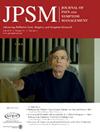Symptomatic Estuary, Where Palliative Meets Hospice: Terminally Ill Advanced Complex Symptom Management
IF 3.5
2区 医学
Q2 CLINICAL NEUROLOGY
引用次数: 0
Outcomes
1. Propose rational pharmacologic management in the complex adult and pediatric patient with refractory nausea/vomiting, bowel obstruction, anorexia, refractory agitation, delirium and/or hallucinations, and fatigue.
2. Evaluate the benefits and limitations of hospice versus palliative services for complex patients at the end of life.
Abstract
This continuing education session will provide an in-depth exploration of the pharmacologic management and care transition strategies for adult and pediatric patients experiencing complex and refractory symptoms. Healthcare professionals often encounter challenging cases where standard treatment protocols fail, necessitating a more nuanced and individualized approach. This preconference course will utilize evidence-based pharmacologic strategies to manage a wide variety of palliative topics including: refractory nausea/vomiting, bowel obstruction, anorexia, refractory agitation, delirium, hallucinations, and fatigue in both adult and pediatric populations. Considerations for patients with renal and hepatic insufficiency will also be addressed. These topics will be explored using a multi-disciplinary, case-based, and discussion-centered approach. Preconference participants should expect to actively engage with the presenters, drawing upon their experience with complex cases. This session will critically assess the benefits and limitations of various hospice versus palliative care programs for complex patients nearing the end of life. Participants will gain insights into the nuanced differences between these services, enabling them to make informed decisions that align with the unique needs and preferences of each patient. By the end of this session, participants will be outfitted with practical skills and knowledge to enhance the quality of care for patients with complex, refractory symptoms. Participants will be better equipped to determine if, and how their program will be able to meet the needs of each complex case.
References
NCCN Clinical Practice Guidelines in Adult Cancer Pain (NCCN Guidelines) for Adult Cancer Pain Version 2.2024. National Comprehensive Cancer Network, Inc. 2024. All rights reserved. Accessed [Sept, 26 2024]. To view the most recent and complete version of the guideline, go online to NCCN.org. NCCN Clinical Practice Guidelines in Palliative Care (NCCN Guidelines) for Adult Cancer Pain Version 1.2024. © National Comprehensive Cancer Network, Inc. 2024. All rights reserved. Accessed [September, 26 2024]. To view the most recent and complete version of the guideline, go online to NCCN.org. Girard, T. D., et al. (2018). Haloperidol and ziprasidone for treatment of delirium in critical illness. N Engl J Med, 379(26), 2506-2516. Khorassani, F., & Saad, M. (2019). Intravenous olanzapine for the management of agitation: review of the literature. Ann Pharmacother, 53(8), 853-859. Sher, Y., et al. (2015). Valproic acid for treatment of hyperactive or mixed delirium: rationale and literature review. Psychosomatics, 56(6), 615-625. Gagnon, D. J., et al. (2017). Repurposing valproate, enteral clonidine, and phenobarbital for comfort in adult ICU patients: a literature review with practical considerations. Pharmacotherapy. 37(10), 1309-1321 Kamal, Arif H., et al. "Dyspnea review for the palliative care professional: treatment goals and therapeutic options." Journal of palliative medicine 15.1 (2012): 106-114. Bodtke, S., & Lignon, K. (2016). Pulmonology In Hospice and Palliative Medicine Handbook: A Clinical Guide CreateSpace, USA Gravatt L, Donohoe KL, Gatesman ML. Nausea and Vomiting. In: DiPiro JT, Yee GC, Posey L, Haines ST, Nolin TD, Ellingrod V. eds. Pharmacotherapy: A Pathophysiologic Approach, 11e. McGraw Hill; 2020. Bollag, Laurent, et al. "Society for obstetric anesthesia and perinatology: consensus statement and recommendations for enhanced recovery after cesarean." Anesthesia & Analgesia 132.5 (2021): 1362-1377. Nathan, Naveen. "management of postoperative nausea and vomiting: the 4th consensus guidelines." Anesthesia & Analgesia 131.2 (2020): 410.
有症状的河口,姑息治疗与临终关怀的地方:末期疾病高级复杂症状管理
Outcomes1。对难治性恶心/呕吐、肠梗阻、厌食、难治性躁动、谵妄和/或幻觉、疲劳等复杂的成人和儿童患者提出合理的药物治疗建议。评估复杂病人临终时安宁疗护与缓和疗护的利弊。摘要本次继续教育课程将深入探讨成人和儿童患者复杂难治性症状的药物管理和护理过渡策略。医疗保健专业人员经常遇到标准治疗方案失败的挑战性病例,需要更细致和个性化的方法。这门会前课程将利用基于证据的药理学策略来管理各种各样的姑息治疗主题,包括:成人和儿童人群中的难治性恶心/呕吐、肠梗阻、厌食症、难治性躁动、谵妄、幻觉和疲劳。对肾功能和肝功能不全患者的注意事项也将讨论。这些主题将采用多学科、基于案例和以讨论为中心的方法进行探讨。会前的参与者应该期望积极地与主讲人互动,利用他们处理复杂案例的经验。本课程将批判性地评估各种安宁疗护与缓和疗护方案对接近生命末期的复杂病患的益处与局限性。参与者将深入了解这些服务之间的细微差别,使他们能够根据每位患者的独特需求和偏好做出明智的决定。在本课程结束时,参与者将具备实用技能和知识,以提高对复杂难治性症状患者的护理质量。参与者将更好地决定他们的项目是否能够满足每个复杂案例的需求,以及如何满足这些需求。参考文献NCCN临床实践指南在成人癌症疼痛(NCCN指南)成人癌症疼痛2.2024版。国家综合癌症网络,公司2024。版权所有。访问日期:2024年9月26日。要查看该指南的最新和完整版本,请上网访问NCCN.org。NCCN临床实践指南在姑息治疗(NCCN指南)成人癌症疼痛版本1.2024。©National Comprehensive Cancer Network, Inc. 2024版权所有。访问[September 26 2024]。要查看该指南的最新和完整版本,请上网访问NCCN.org。吉拉德,t.d.等人(2018)。氟哌啶醇与齐拉西酮治疗危重症谵妄。中国生物医学工程杂志,2004,26(3):526 - 526。霍拉萨尼,F;Saad, M.(2019)。静脉注射奥氮平治疗躁动:文献综述。中国生物医学工程学报,35(8),853-859。谢尔,Y.,等(2015)。丙戊酸治疗多动症或混合性谵妄:基本原理和文献综述。心理学报,56(6),615-625。Gagnon, D. J.等(2017)。重新利用丙戊酸、肠内可乐定和苯巴比妥治疗成人ICU患者的舒适度:一项具有实际考虑的文献综述。张晓明,王晓明,等。药物治疗。37(10),1309-1321。“姑息治疗专业人员的呼吸困难回顾:治疗目标和治疗方案。”缓和医学杂志15.1(2012):106-114。博德克,S。利尼翁,K.(2016)。《安宁疗护与缓和医学肺科手册:临床指南》CreateSpace, USA Gravatt L, Donohoe KL, Gatesman ML.恶心与呕吐。In: DiPiro JT, Yee GC, Posey L, Haines ST, Nolin TD, Ellingrod V.等。药物治疗:病理生理学方法,11页。麦格劳希尔;2020. Bollag, Laurent等。“产科麻醉和围产期学会:提高剖宫产术后恢复的共识声明和建议。”麻醉,镇痛132.5(2021):1362-1377。内森纳文。术后恶心和呕吐的处理:第4次共识指南麻醉,《镇痛》杂志(2020):410。
本文章由计算机程序翻译,如有差异,请以英文原文为准。
求助全文
约1分钟内获得全文
求助全文
来源期刊
CiteScore
8.90
自引率
6.40%
发文量
821
审稿时长
26 days
期刊介绍:
The Journal of Pain and Symptom Management is an internationally respected, peer-reviewed journal and serves an interdisciplinary audience of professionals by providing a forum for the publication of the latest clinical research and best practices related to the relief of illness burden among patients afflicted with serious or life-threatening illness.

 求助内容:
求助内容: 应助结果提醒方式:
应助结果提醒方式:


